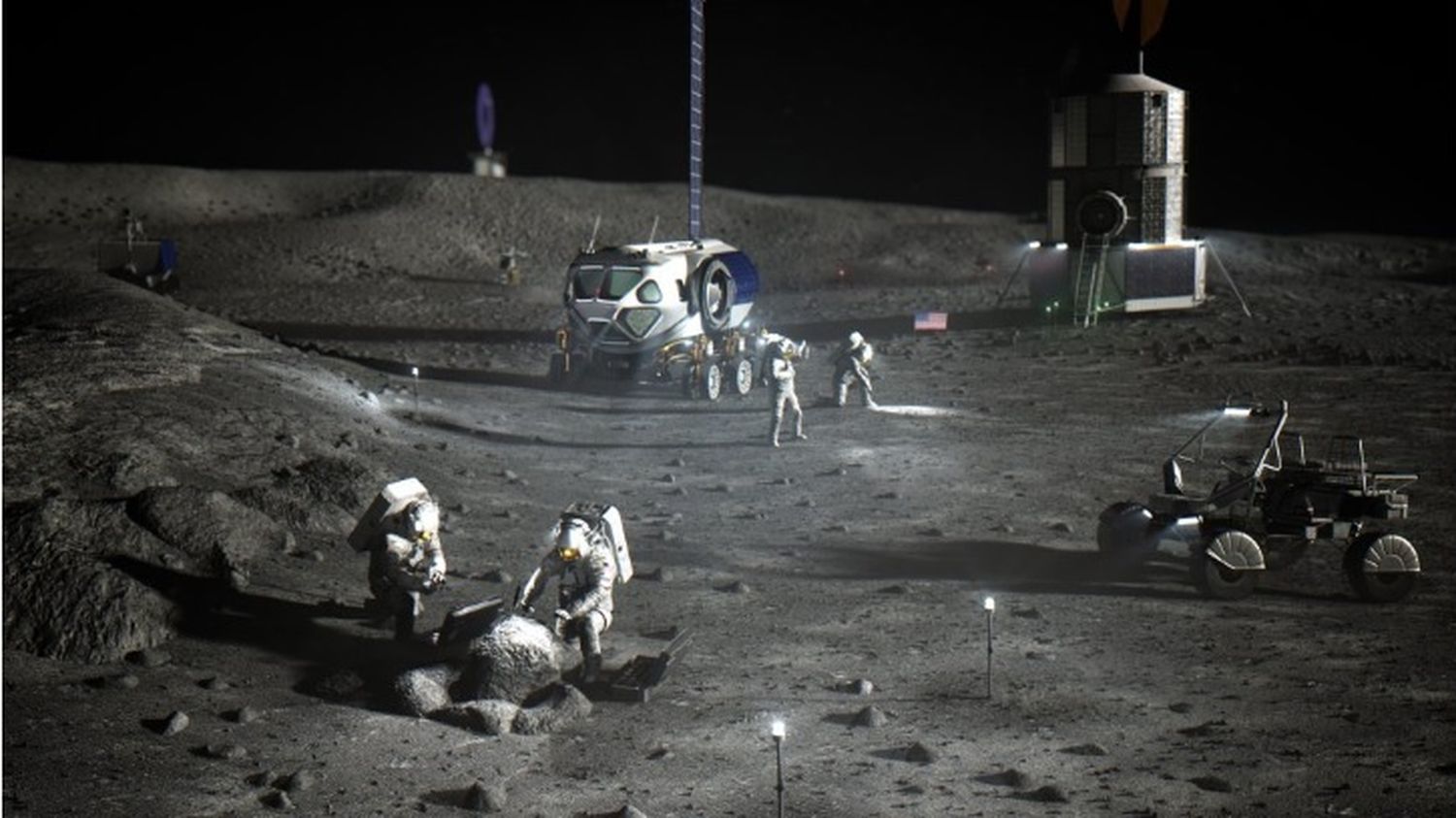The American space agency plans to return to the moon more than 50 years after its last Apollo mission. Its flagship Artemis program has the main objective of a moon landing in 2025, but the Americans do not intend this time to leave behind only a flag and a few footprints.
With Artemis II, NASA is preparing a crew of four astronauts for a trip around the Moon, before the future Artemis III mission which will install a fixed base on the lunar soil with a view to then going to Mars. Via this flagship Artemis program, NASA plans to settle permanently on our satellite. To be able to accommodate people, the agency wants to build lunar houses there, possibly from 2040.
Lunar dust for lunar concrete
It is obviously ambitious, scientists recognize it, but it is possible, assures NASA, despite many obstacles. There is the virtual absence of atmosphere of course, but also radiation, extreme temperatures and lunar dust, present everywhere, dangerous to inhale… and which cuts like glass.
>> We finally managed to weigh the Milky Way
The use of this dust, however, is one of the avenues studied by NASA. By mixing it with other materials found on site, the space agency hopes to be able to make lunar concrete.
In fact, it is impossible to transport bricks or mortar from Earth. Each additional kilo carried aboard a rocket to the moon costs around a million dollars, specifies an article in the New York Timesit is therefore necessary to build “local”.
To make this famous concrete, NASA is counting on 3D printers, which would be responsible for building, layer by layer, these space pavilions, as well as launch pads for the rockets. The agency has entered into a partnership with “Icon”, a company specializing in construction technologies. She already wrote him a check for $60 million last year, proof that this is all very serious. Of course, the project is still in its early stages, but architects are already working on house designs, one of which has been revealed, shaped like a pine cone.
3D printer and colorful furniture
The Artemis mission should serve as a springboard for a future departure towards the red planet, Mars. Four astronauts have been confined since June, in a 3D printed house in Texas. They must spend a year there to simulate living conditions on Mars.
>> The Artemis mission to the Moon is delayed
Meanwhile, NASA continues to work on its lunar homes. Partnerships have even been established with universities and companies to develop suitable furniture. For example, we are talking about isolating the different minerals present in the lunar soil, to create materials of different colors.
As for real estate agents taking over this market, it is still too early to determine the market value of these future space pavilions, NASA is told.
